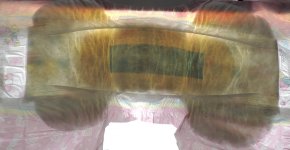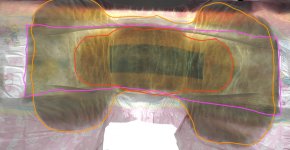Marting
Est. Contributor
- Messages
- 329
- Role
- Adult Baby
- Diaper Lover
Hi guys. Quick question. Why do lots of ABDL nappies have that blue strip on the inside? I can't see the purpose of it. Am I being dumb?
So it's more absorbent than the rest of the inside top layer?jamiejamie said:its used to quickly absorb the wetness and then distribute it to the white fluff material.
Yes, rapid absorption so that the urine doesn't go straight down to the bottom due to gravity.Marting said:So it's more absorbent than the rest of the inside top layer?
Marting said:Hi guys. Quick question. Why do lots of ABDL nappies have that blue strip on the inside? I can't see the purpose of it. Am I being dumb?
DiscreetDL said:Its where the majority of the absorbent polymer is


bambinod said:Here's a freshly unfolded Little for Big Baby Cuties attached to a shop light to candle it. The back (tapes) side is on the right.
View attachment 54712
If you look closely, there are a total of three pads stacked up. There's the hourglass, then you can see the edges of a long narrow pad that stretches from left to right. (you can see it extend a bit on the left and right, square cut off) And then there's that big patch of darker yellow shaped like a rounded-end band-aid in the middle. (it looks like its getting wider in the middle, that's just the diaper distorting away from being flat due to the leg gather elastic)
View attachment 54713
I think the first layer is the orange hourglass, a medium sap mix, then over that they put down the high sap red layer to greatly increase capacity, and then last they put down that purple surge zone strip. in this case, the surge zone goes all the way from front to back, and this seems to be pretty common. In this case I think the surge strip is made from the same padding as the hourglass. On other diapers it looks different, maybe a different sap ratio. (less) But in this case it looks identical, it just doubles the thickness of the padding up the middle.
I'd wager that 80% of the capacity of that diaper is in that orange sap insert, and that it makes the crotch swell to like 5x its regular thickness when wet, where as the rest of the padding only doubles at most when wet.
Notice that blue "paint job" in the middle doesn't correspond to anything, it's entirely for looks.
I've seen a few examples of diapers where they didn't have a high-sap insert in the middle, and the surge zone got wider in the back, but was just rounded off in the front like the sap insert above is. Might have been an old Bambino design. (the current all-over-print ones I have don't do that, they look like the above)
Zeke said:Here’s a link to a YouTube video about the engineering that goes into disposable baby diapers and they use much of the same design features of adult disposables:
When I was mixing my generic Miralax, that I take to combat opioid induced constipation, I started to think that it’s polyethylene glycol, a polymer that absorbs moisture, or the juice I mix with it. I wonder how different it is from super absorbent polymer, SAP, that’s in disposable diapers? If they’re similar then I’ve been drinking a SAP mixture which, after processing, is dumped in the disposables that I’ve been wearing that contain the some of the same material that’s be deposited in them. I’ve got to quit thinking when I’m mixing that stuff up!
WillFord384 said:That's a great photo. Now I feel like I need to go back and re-photograph hundreds of diapers but this time with a light table or something. I hope that was an LED shop light so you didn't have to worry about getting the shot before the diaper started melting
And thanks for the explanation. I had no idea of the interior structure.
